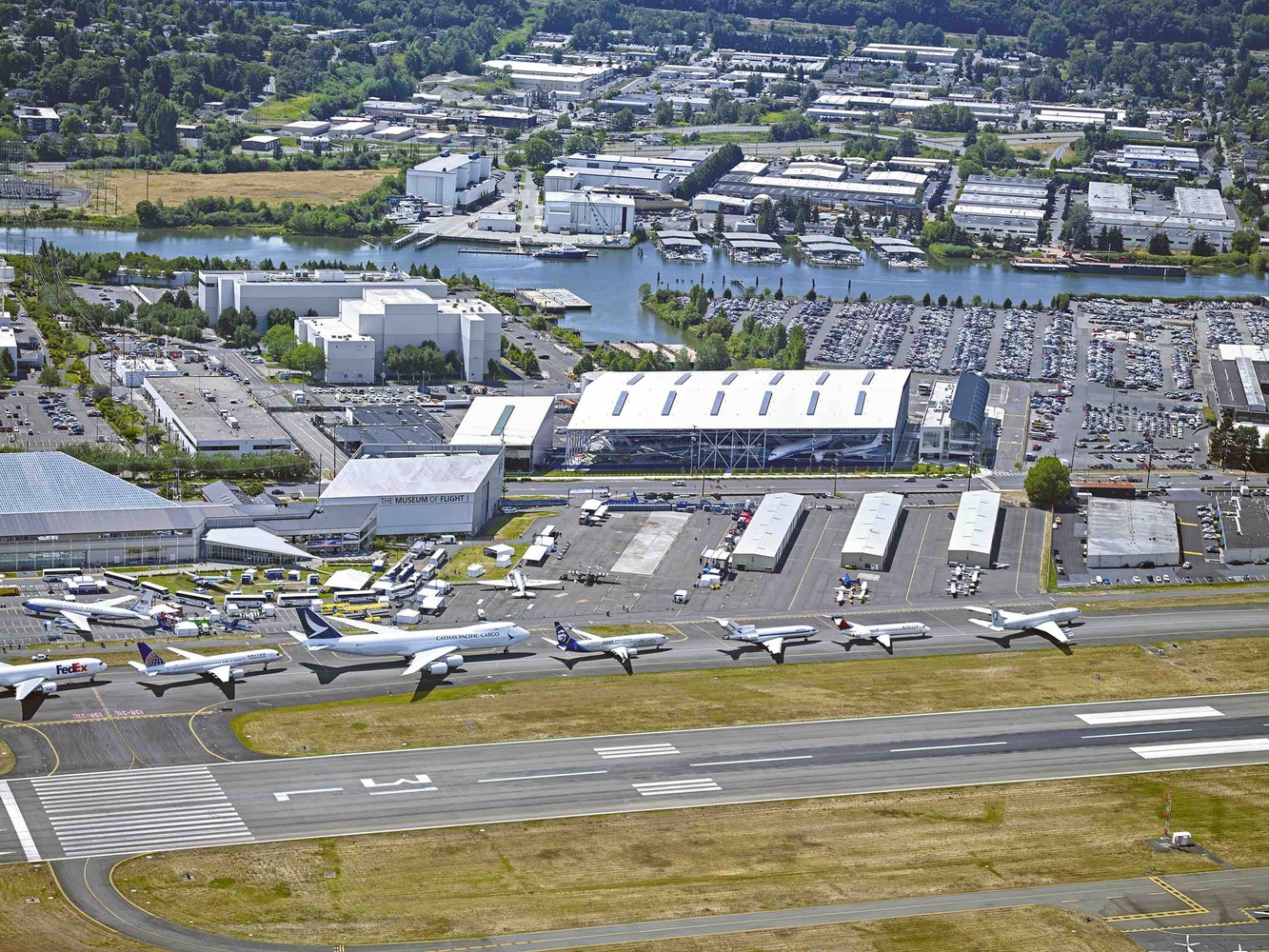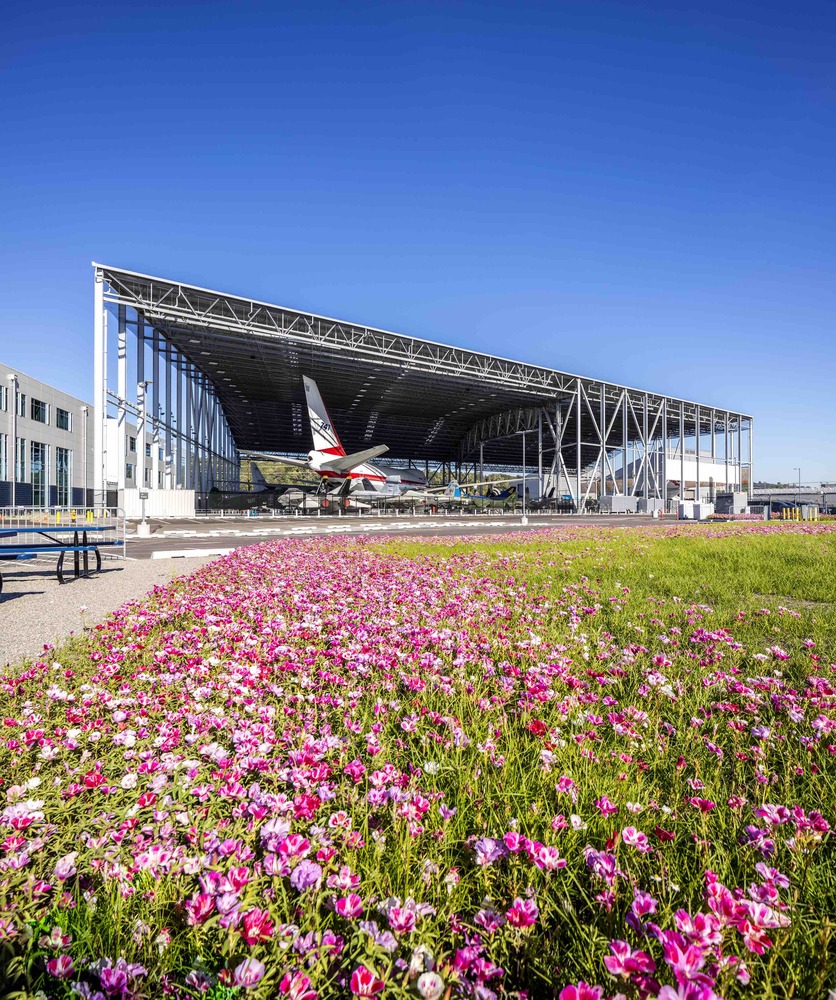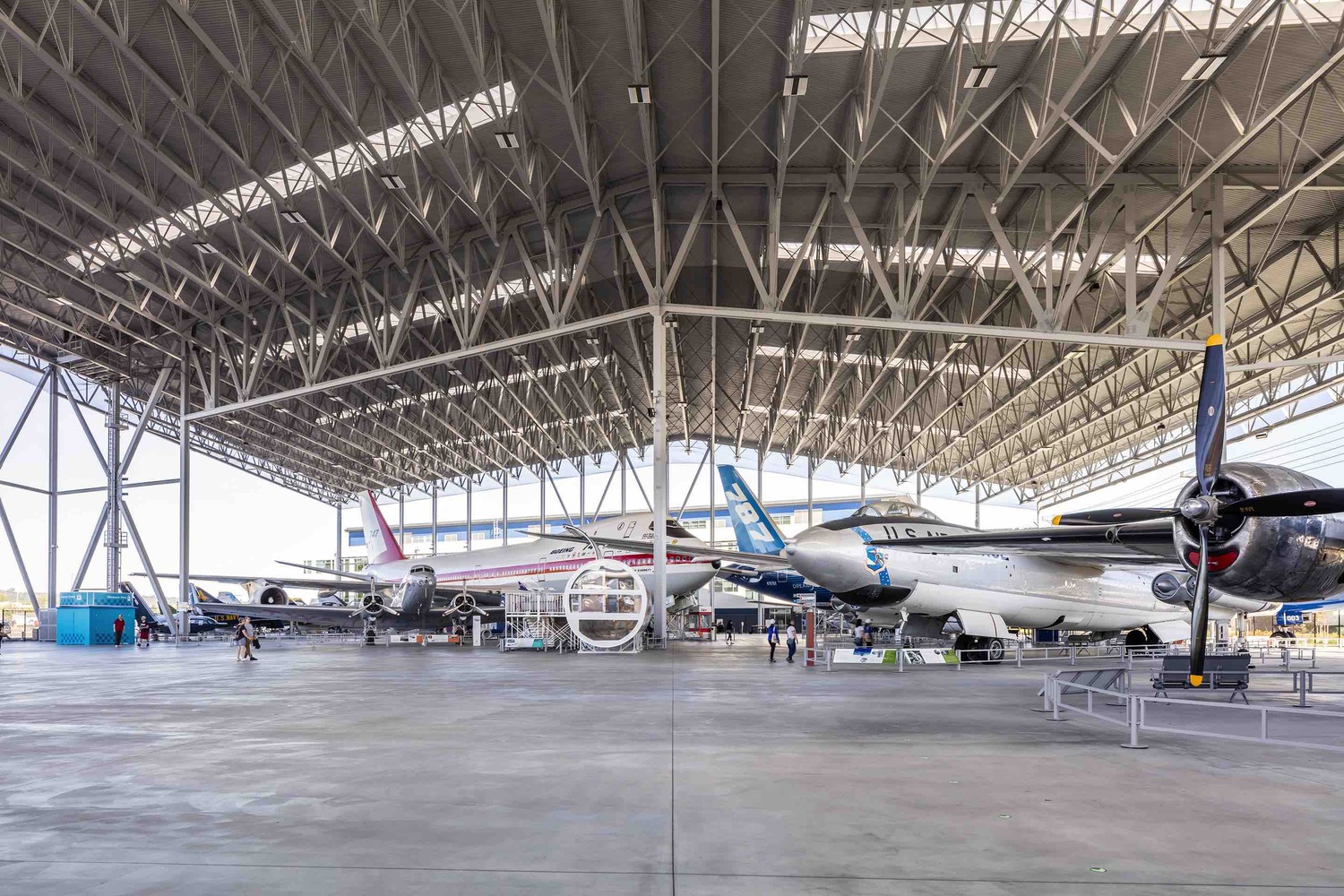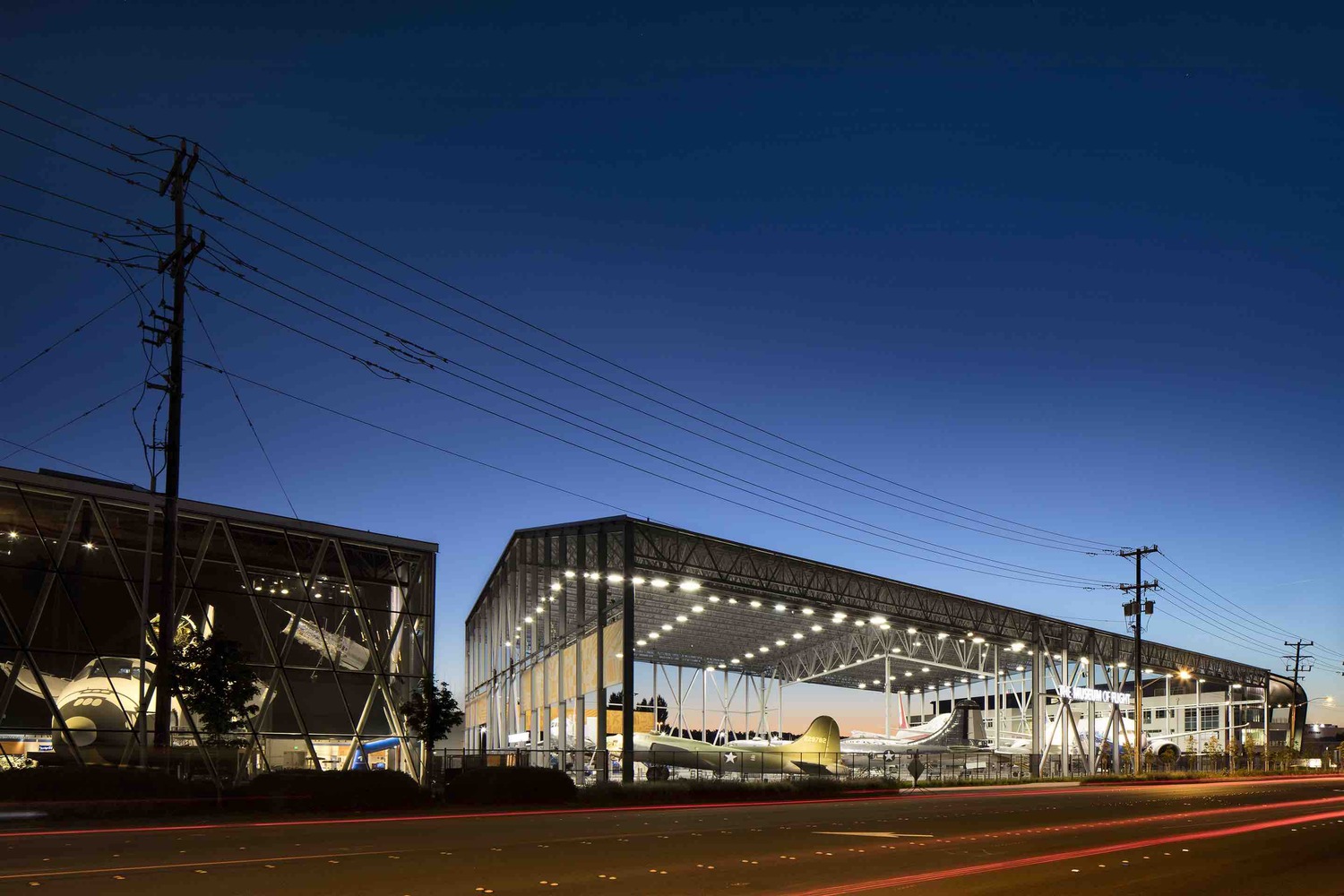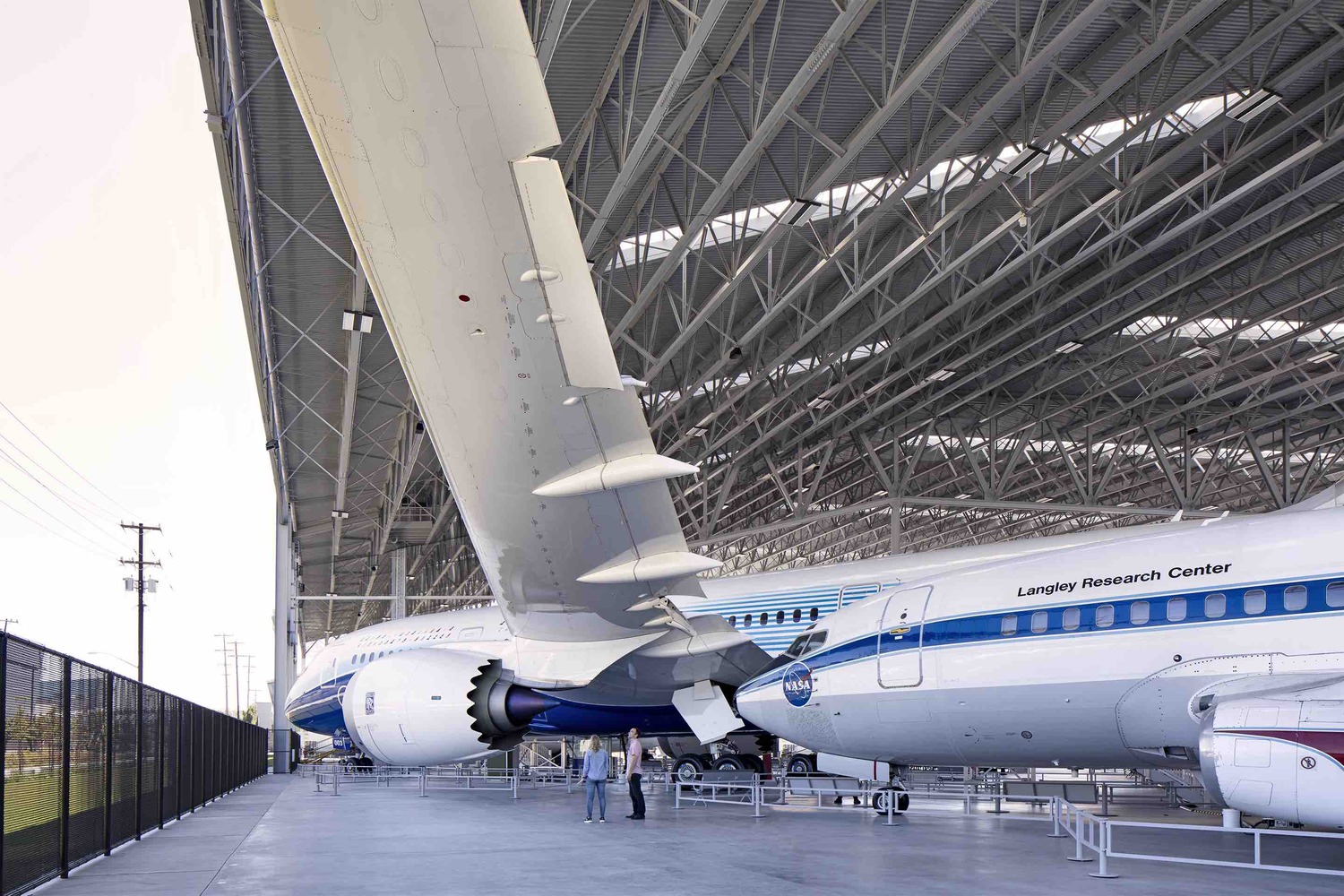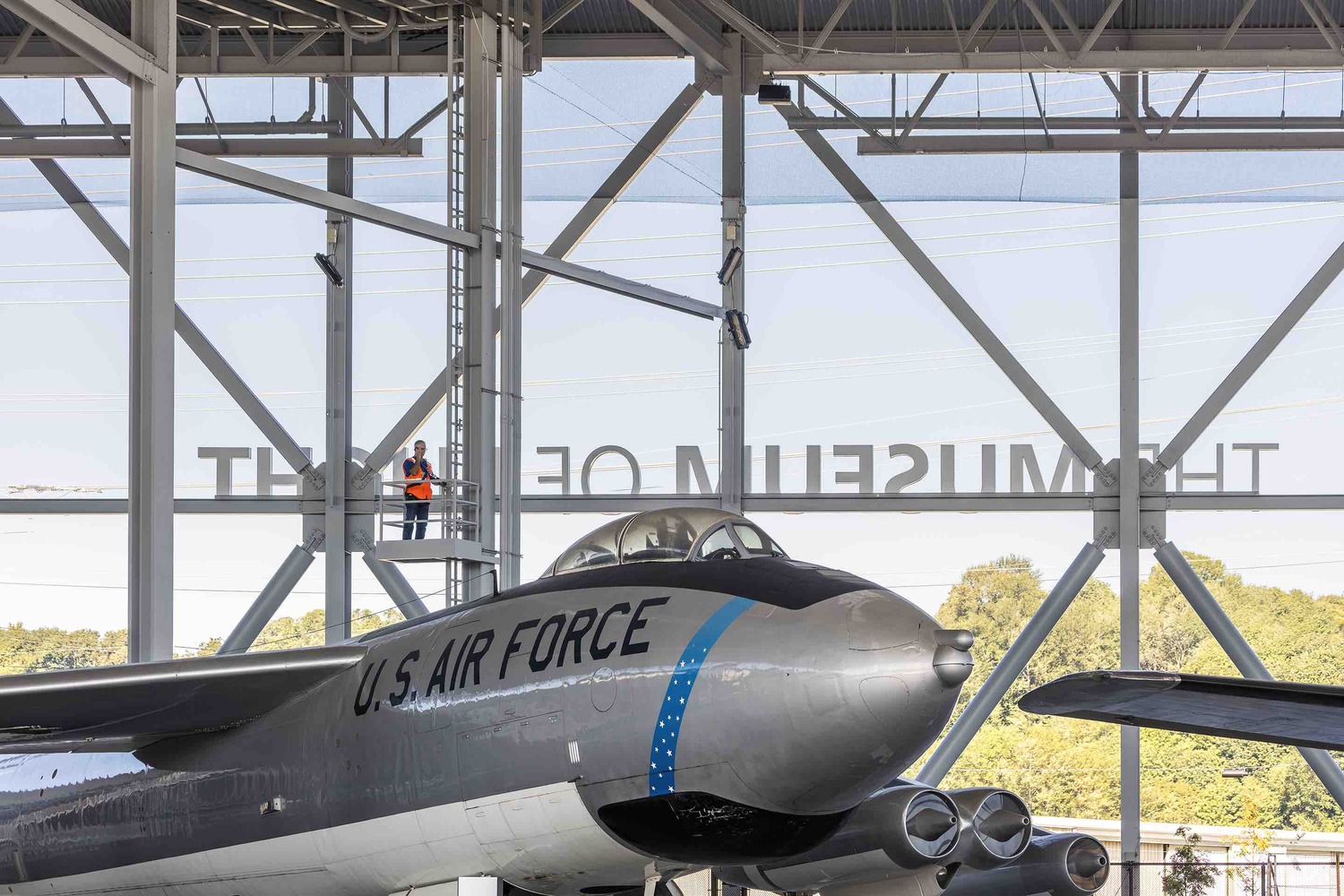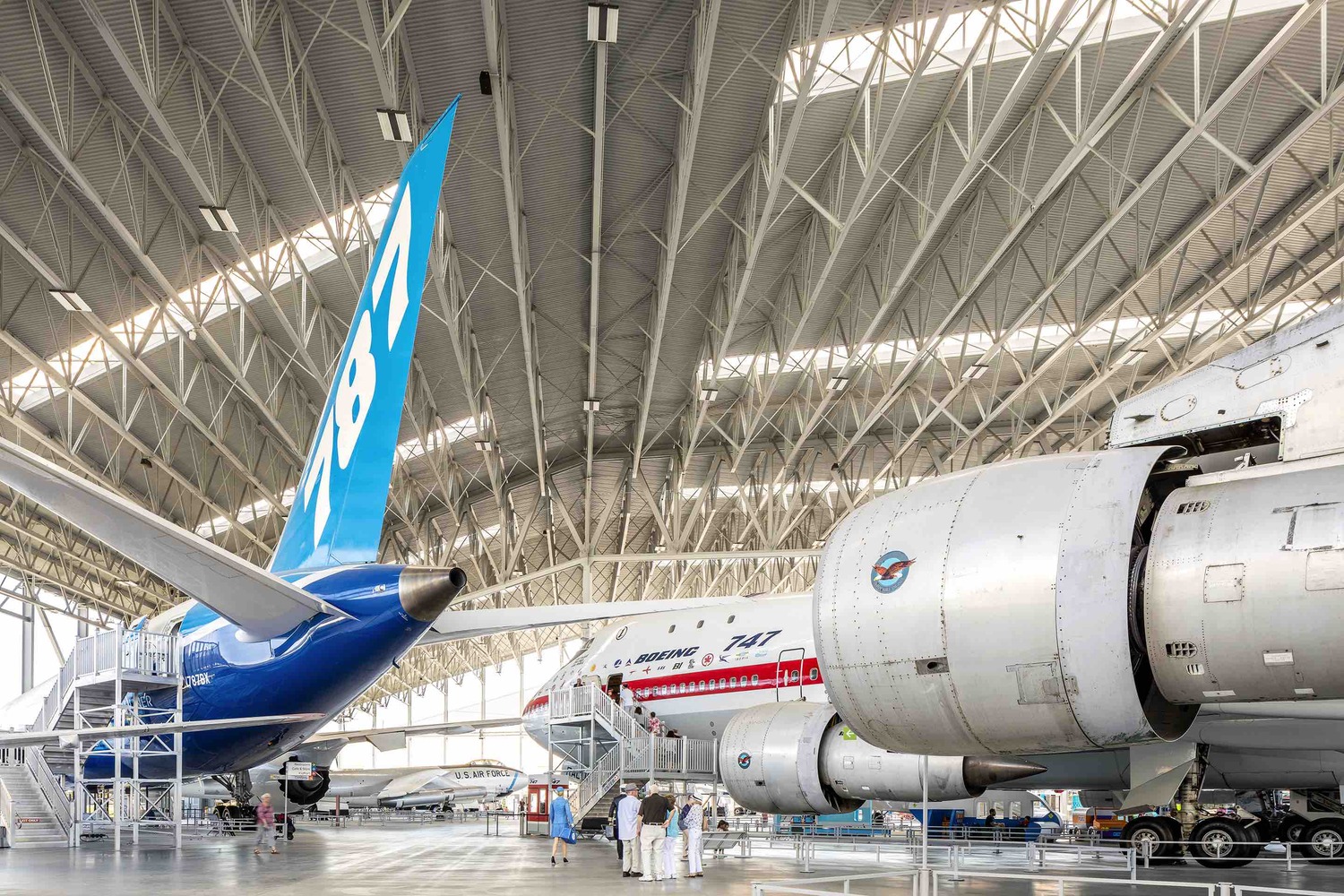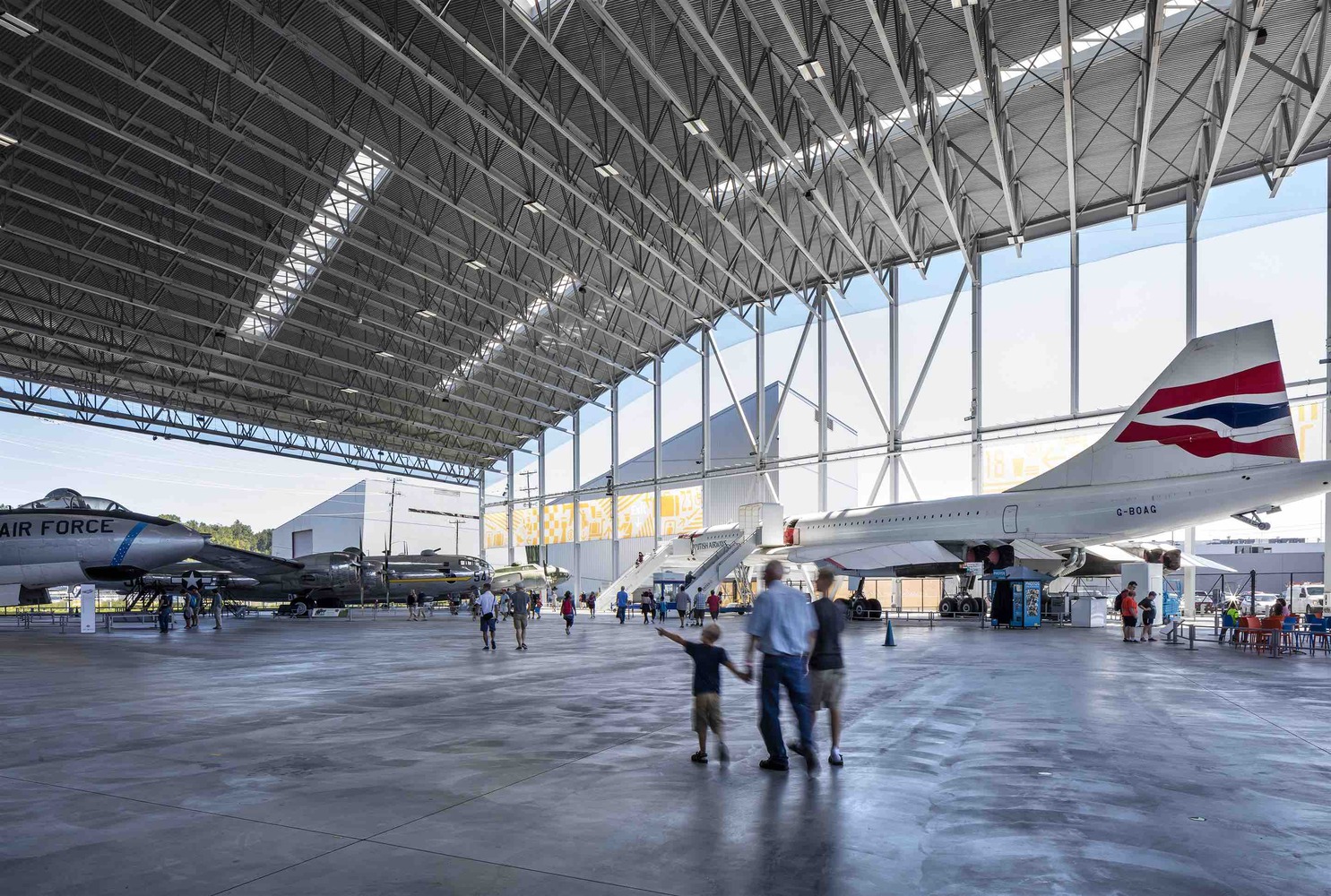From the architect. The Museum of Flight’s Aviation Pavilion is a 135,000 square foot roof supported by steel columns and brace frames with a twelve-inch concrete paving slab. It houses twenty aircraft for augmented protection from the elements and patron access. Exhibited planes include the iconic Boeing 747 and 787 prototypes, Air Force One, Concorde, and other historic military and commercial aircraft. The building is a parallelogram approximately 460 feet wide, 315 feet deep and between 55 and 87 feet tall. It connects the Charles Simonyi Space Gallery and the Raisbeck Aviation High School on the Museum’s west campus. Six rows of skylights distribute even natural light and prevent glare and silhouetting in the open-air facility. Design supports the future enclosure of the structure with leaning glazing at East Marginal Way South and visual access from the High School.
The Aviation Pavilion at the Museum of Flight is a truly unique exploratory and educational experience. Designing a place for 20 “exhibits” (aircraft) up to 230 feet long and 64 feet tall was an exercise in gigantic! The roof covers more than three acres. Five million cubic feet of space is protected from the elements. 1,375 tons of steel (enough to make 1,100 cars) supports it all. But the space is really designed for one human being, the patron. The building allows even the smallest enthusiast to experience the history and wonder of the Museum’s collection of large passenger and military aircraft.
The Museum of Flight required not only storing, protecting and exhibiting aircraft, but also accommodating their re-configuration as collection and exhibit needs change. This makes for a very high roof and a very large roof span – 230’. Joists this long are at the limit of standard shop fabrication methods and posed a challenge for transportation. Working with our structural team and contractor, a custom fabrication method was developed that saved weight and cost and allowed for an economical painting solution.
One highly coordinated reconfiguration effort occurred before building construction was complete. The 747 and 787 prototypes were both too wide and too tall to be maneuvered across the public right of way and through the completed structure. Arrangements were made to store the 747 in the adjacent Aviation High School parking lot during construction. An opening accommodating the 787’s two hundred-foot wingspan and fifty-six-foot height was left below the building’s center truss, and this plane was moved halfway through construction.
With this type of spatial flexibility, it is inevitable that weather will enter the building below the 56 to 87-foot-tall roof. SRG designed the concrete floor to be slip-resistant and easily cleanable and to promote draining, all while supporting the Museum’s desire to enclose the space in the future. Select wall construction contingencies were provided and SRG is listening to Museum feedback about rain penetration to ensure a world-class visitor experience.
Product Description. Star Seismic, Wildcat Buckling-Restrained Braces
Vertical structure supporting the Aviation Pavilion roof is driven to the margins by the expansive dimensions of airplane wings and fuselages. Perimeter columns and braces pushed to their load-bearing limits also act as the backdrop to the huge exhibits, and their ordered and open nature is critical to the space’s success. Buckling-restrained braces, usually concealed in large-scale multi-story construction, are used unapologetically to reduce the number of shear elements while emphasizing the verticality of the structure and letting daylight pour into the structure. These large but slender vertical elements help define space within the strong horizontal context of earth, roof, and flight.
